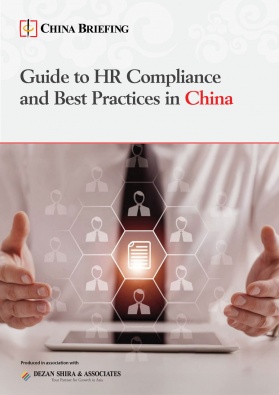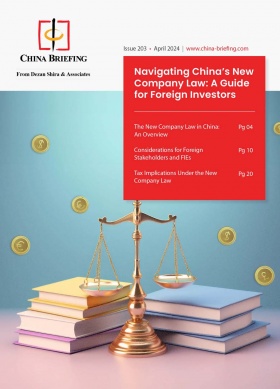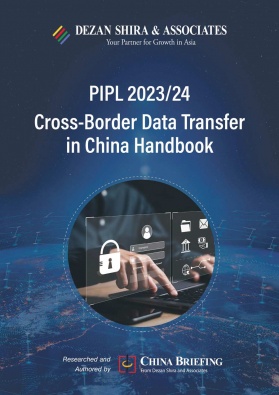Maternity Leave in China: A Complete Guide
In this article, we explore the duration of maternity leave in China’s major provinces, delve into the complexity of maternity allowance management, and highlight considerations specific to foreign female employees.
Maternity leave in China is a type of paid leave provided to female employees for childbearing. Unlike some countries where maternity leave is also granted to those adopting a child, in China, only female employees who actually give birth or suffer miscarriage can apply for paid maternity leave.
Maternity leave in China includes two parts: the basic maternity leave granted by the State Council, and the extra maternity leave granted by local governments.
While the basic maternity leave uniformly applies to all female employees across the country, the extra maternity leave could vary from city to city. For example, Shanghai provides 30 days extra maternity leave to female employees, Anhui provides 60 days extra maternity leave, and Hainan provides three months extra maternity leave. It can therefore be more complex for an employer to calculate how much maternity leave and allowance a female employee is entitled to.
In this article, we explore the duration of maternity leave in China’s major provinces, delve into the complexity of maternity allowance management, and highlight considerations specific to foreign female employees.
Who can apply for maternity leave?
According to the Provisions on Female Labor Protection under Special Circumstances (State Council Decree No. 619), maternity leave is granted to the following groups:
- Female employees giving birth
- Female employees who suffer a miscarriage
However, unlike some other countries, female employees adopting a child cannot apply for maternity leave.
On the other hand, local population and family planning regulations typically specify that local extra maternity leave is only granted to legally married female employees whose childbirth aligns with the family planning rules. Consequently, female employees who give birth in violation of the currently implemented three-child policy will not be eligible for local extra maternity leave. Furthermore, this requirement poses challenges for single female employees seeking to access local extra maternity leave for their childbearing.
This is different from the national basic maternity leave, which is granted to female employees with childbirth or miscarriage under all circumstances.
How long is maternity leave in China?
The basic maternity leave, also known as national maternity leave, is 98 days for normal childbirth, as stipulated in the Provisions on Female Labor Protection under Special Circumstances (State Council Decree No. 619). An additional 15 days will be granted to those under special circumstances, such as dystocia. In the case of a multiple birth, an additional 15 days of maternity leave shall be granted for each infant.
A female employee who suffers a miscarriage during the first four months of pregnancy shall be entitled to 15 days of basic maternity leave, while a female employee who suffers a miscarriage after the fourth month of pregnancy shall be entitled to 42 days of maternity leave.
The local extra maternity leave ranges from 30 days to 3 months, as stipulated in the local population and family planning regulations.
A complete table of maternity leave in China is shown below (for normal childbirth only):
| Maternity Leave in China (in days) | |||
| Provinces | Basic maternity leave | Local extra maternity leave | In total |
| Anhui | 98 | 60 | 158 |
| Beijing* | 98 | 60 | 158 |
| Chongqing* | 98 | 80 | 178 |
| Fujian | 98 | 60~82 | 158~180 |
| Gansu | 98 | 82 | 180 |
| Guangdong | 98 | 80 | 178 |
| Guangxi** | 98 | 60/70/80 | 158/168/178 |
| Guizhou | 98 | 60 | 158 |
| Hainan* | 98 | 3 months | 98+3months |
| Hebei** | 98 | 60/90 | 158/188 |
| Heilongjiang | 98 | 82 | 180 |
| Henan | 98 | 3 months | 98+3months |
| Hubei | 98 | 60 | 158 |
| Hunan | 98 | 60 | 158 |
| Inner Mongolia** | 98 | 60/90 | 158/188 |
| Jiangsu | 98 | 60 | 158 |
| Jiangxi | 98 | 90 | 188 |
| Jilin* | 98 | 82 | 180 |
| Liaoning | 98 | 60 | 158 |
| Ningxia | 98 | 60 | 158 |
| Qinghai | 98 | 90 | 158 |
| Shaanxi** | 98 | 60 or 70/75 or 85 | 158 or 168/173 or 183 |
| Shandong | 98 | 60 | 158 |
| Shanghai | 98 | 60 | 158 |
| Shanxi | 98 | 60 | 158 |
| Sichuan | 98 | 60 | 158 |
| Tianjin | 98 | 60 | 158 |
| Tibet | 98 | 267-268/447-448 | 1 year/1.5 years |
| Xinjiang | 98 | 60 | 158 |
| Yunnan | 98 | 60 | 158 |
| Zhejiang** | 98 | 60/90 | 158/188 |
| * In Beijing, Hainan, Chongqing, Jilin, upon agreement with the employer, the employee can get extra leave with a certain amount of payment. ** In Guangxi, the local extra leave is 60 days for the first child, 70 days for the second child, and 80 days for the third child. In Hebei and Inner Mongolia, the local extra leave is 60 days for the first child and the second child and 90 days for the third child. In Zhejiang, the local extra leave is 60 days for the first child and 90 days for the second child and third child. In Shaanxi, the local extra leave is 60 days for the first child and second child, and 75 days for the third child; an extra 10 days extra leave will be granted if the female employee takes a prenatal check-up. ***If one of the parents chooses to take paid leave until the child is 1 year old, then they won’t be able to enjoy the 5-10 days per year childcare leave. |
|||
When does maternity leave start?
Maternity leave in China typically begins 15 days before the expected date of confinement (EDC). During this period, expectant mothers can take time off to prepare for the arrival of their child. This is also outlined in the Provisions on Female Labor Protection under Special Circumstances (State Council Decree No. 619).
However, in practice, the starting date of maternity leave may be mutually agreed upon by the female employee and the employer. For instance, if a female employee’s health allows, she may choose to work until labor begins, giving her more time to care for the baby after childbirth.
On the other hand, female employees who need to suspend work several months before the expected childbirth date due to health concerns should apply for annual leave or sick leave according to relevant company rules.
Can maternity leave be taken separately?
In principle, maternity leave cannot be taken separately, but employees and employers can make flexible arrangements on the basis of consensus
What if maternity leave coincides with public holidays?
The basic maternity leave generally includes working days, weekends, and national holidays, which means maternity leave does not need to be extended when it meets weeks and national holidays. However, for extra maternity leave granted by local government, it’s up to local regulations regarding whether maternity leave can be extended upon weekends and national holidays.
For example, Shenzhen and Tianjin adopt similar rules for their local extra maternity leave as the national basic maternity leave, providing no extension for weekends and national holidays. In contrast, Shanghai allows the local extra maternity leaves to be extended during national holidays. Employers are therefore advised to verify with the local labor bureau before determining the starting date and ending date of the female employee’s maternity leave.
How will the female employee be paid during the maternity leave?
During basic maternity leave, female employees receive a maternity allowance in place of their regular salary, as long as they have participated in maternity insurance for a specified period, as mandated by the local maternity insurance scheme.
For example, in Shanghai, a female employee must have participated in maternity insurance for a total of 12 months or a consecutive period of 9 months by the month of giving birth or experiencing a miscarriage. If this requirement is met, the maternity allowance is covered entirely by the local Social Security Bureau. If the requirement is not fulfilled, the local social security bureau partially covers the maternity allowance based on the months of contribution, while the remaining portion is initially borne by the employer until the contribution period meets the requirement. If the employee is not enrolled in the maternity insurance scheme, the employer would need to pay the employee’s average salary during her maternity leave.
Nevertheless, there is no universal rule on whether maternity allowances cover the extra maternity leave granted by local government. In practice, the policy varies from province to province, or even city to city.
In cities where the extra maternity leave is not covered by the maternity allowance, employers are required to pay the employee’s salary during the extra maternity leave. This further results in employer’s reluctance to hire female employees who are under childbearing age.
In determining the amount of maternity allowance, the Social Security Bureau will generally refer to the average monthly salary of all employees in the company over the last 12 months (hereinafter ‘company average salary’), based on the below formula:
MATERNITY ALLOWANCE = COMPANY AVERAGE SALARY ÷ 30 × MATERNITY LEAVE DAYS
In certain cities, the calculation method of maternity allowance and the payment of female employees during maternity leave is more sophisticated. For example, in Shanghai, the Social Security Bureau will cross check company average salary, the social average salary in the bureau’s jurisdiction, and the employee’s monthly salary before the maternity leave (hereinafter ‘employee’s salary’):
- If the company average salary is no more than three times the social average salary in the bureau’s jurisdiction, the maternity allowance paid by the bureau will be the company average salary.
- If the company average salary is over three times of the social average salary in the bureau’s jurisdiction, the maternity allowance will be capped at three times the local average salary, and any amount beyond that will be borne by the employer itself.
- If the maternity allowance paid by the bureau is lower than the employee’s salary, the employer must cover the difference.
- Additionally, maternity allowance is subject to minimum standards – maternity allowance generally cannot be lower than 60 percent of the local social average salary.
Can foreign employees apply for maternity leave and maternity allowance?
Foreign female employees (including those from Hong Kong, Macao, and Taiwan) can access the basic maternity leave available to all female employees, provided they legally work in the country. However, they typically do not qualify for the local extra maternity leave, which is governed by the local population and family planning regulation and applies to Chinese citizens only.
If the foreign employee is enrolled in the maternity insurance scheme for the required duration, she can apply for a maternity allowance. However, there might be limits on the number of times she can claim this allowance. For instance, in Chongqing, foreign employees are eligible for maternity allowance only twice at most.
For foreigners not enrolled in maternity insurance, the employer is responsible for covering the salary costs during the employee’s maternity leave. Employers are therefore suggested to enroll their foreign employees in maternity insurance in a timely manner as well.
Suggestions to employers on maternity leave management
In general, we have the below suggestions for employers:
- Enroll employees in maternity insurance promptly: Employers should ensure that female employees are enrolled in maternity insurance in a timely manner. Failing to do so may result in the employer bearing the full cost of maternity allowances, especially if the employee’s salary is high. Therefore, it is advisable to enroll newly hired employees into maternity insurance in time.
- Establish clear maternity leave policies: Employers should create well-defined maternity leave policies, covering aspects such as leave duration, application procedures, allowances, salary payments, and work arrangements. These policies ensure that female employees understand their rights while also safeguarding the company’s interests. Striking a balance between flexibility and adherence to regulations is essential. An accommodating maternity leave policy not only complies with women’s protection laws but also enhances the company’s reputation in attracting and retaining talent.
- Maintain open communication with female employees: Regularly seek feedback from female employees regarding maternity leave policies. Continuously improve and refine maternity leave management based on their input. Address any challenges or difficulties faced by female employees during maternity leave promptly to prevent unnecessary disputes.
- Stay informed and collaborate with local authorities: Since extra maternity leave regulations vary at the local level, employers should maintain close communication with relevant local social security and human resources bureaus. Keeping informed about changes and adjusting internal maternity leave policies accordingly ensures compliance and effective management.
About Us
China Briefing is one of five regional Asia Briefing publications, supported by Dezan Shira & Associates. For a complimentary subscription to China Briefing’s content products, please click here.
Dezan Shira & Associates assists foreign investors into China and has done so since 1992 through offices in Beijing, Tianjin, Dalian, Qingdao, Shanghai, Hangzhou, Ningbo, Suzhou, Guangzhou, Haikou, Zhongshan, Shenzhen, and Hong Kong. We also have offices in Vietnam, Indonesia, Singapore, United States, Germany, Italy, India, and Dubai (UAE) and partner firms assisting foreign investors in The Philippines, Malaysia, Thailand, Bangladesh, and Australia. For assistance in China, please contact the firm at china@dezshira.com or visit our website at www.dezshira.com.
- Previous Article China Issues New Fair Competition Review Regulations in Effort to Improve the Business Environment
- Next Article Investing in China’s Wearable Medical Devices Market: Trends and Opportunities








